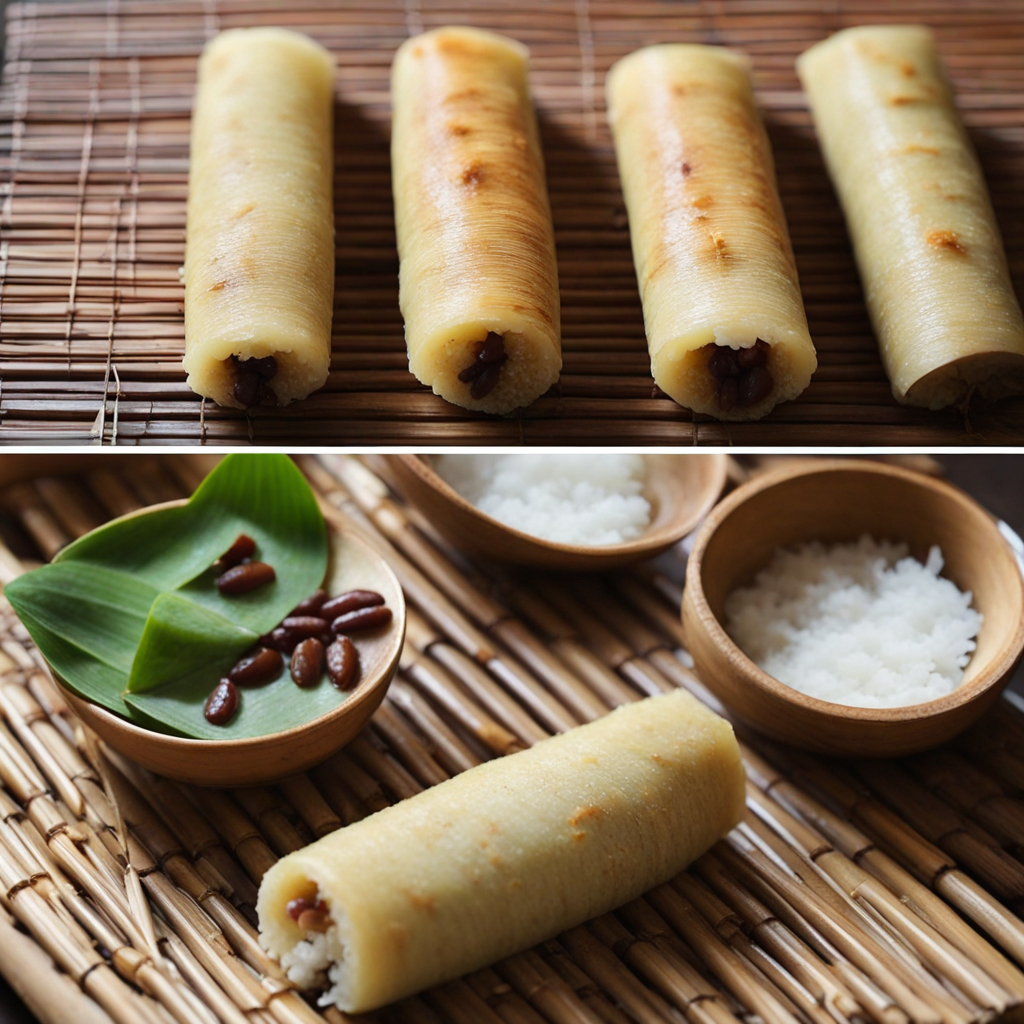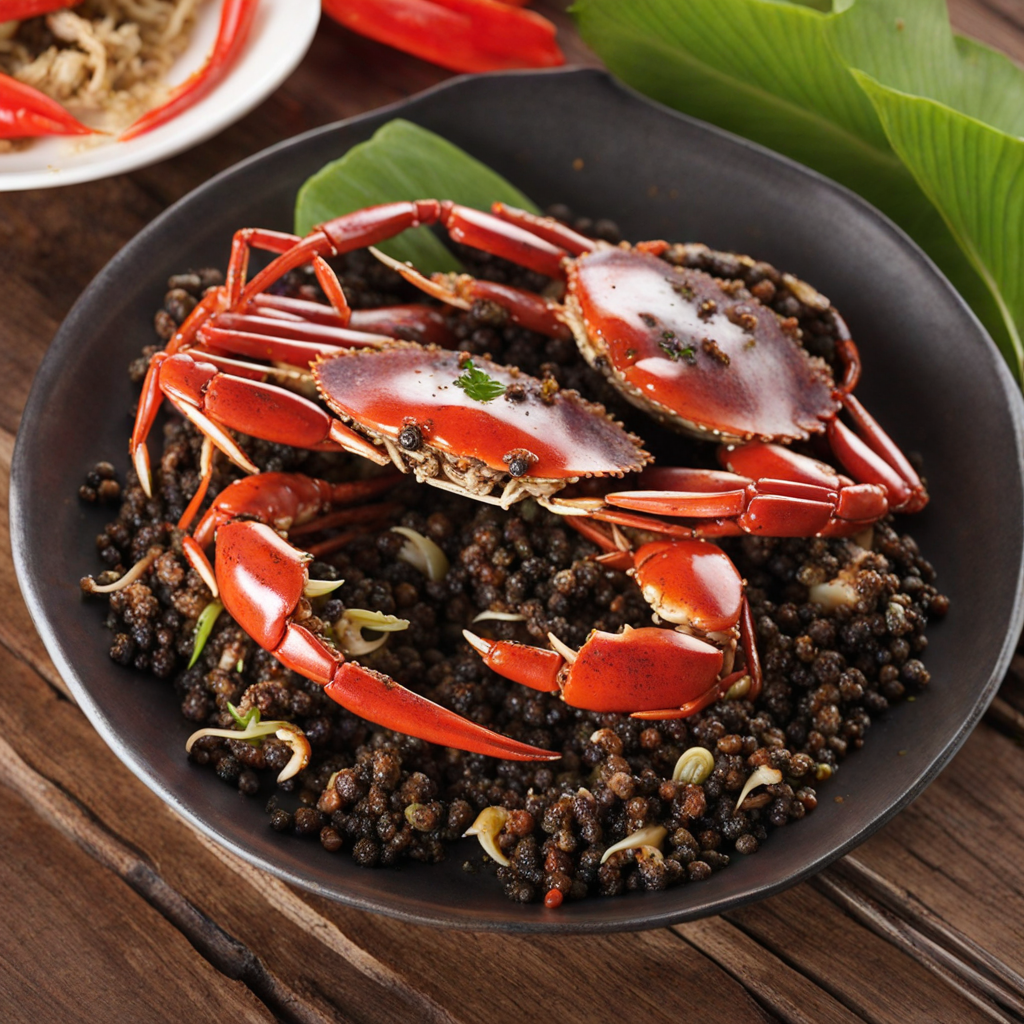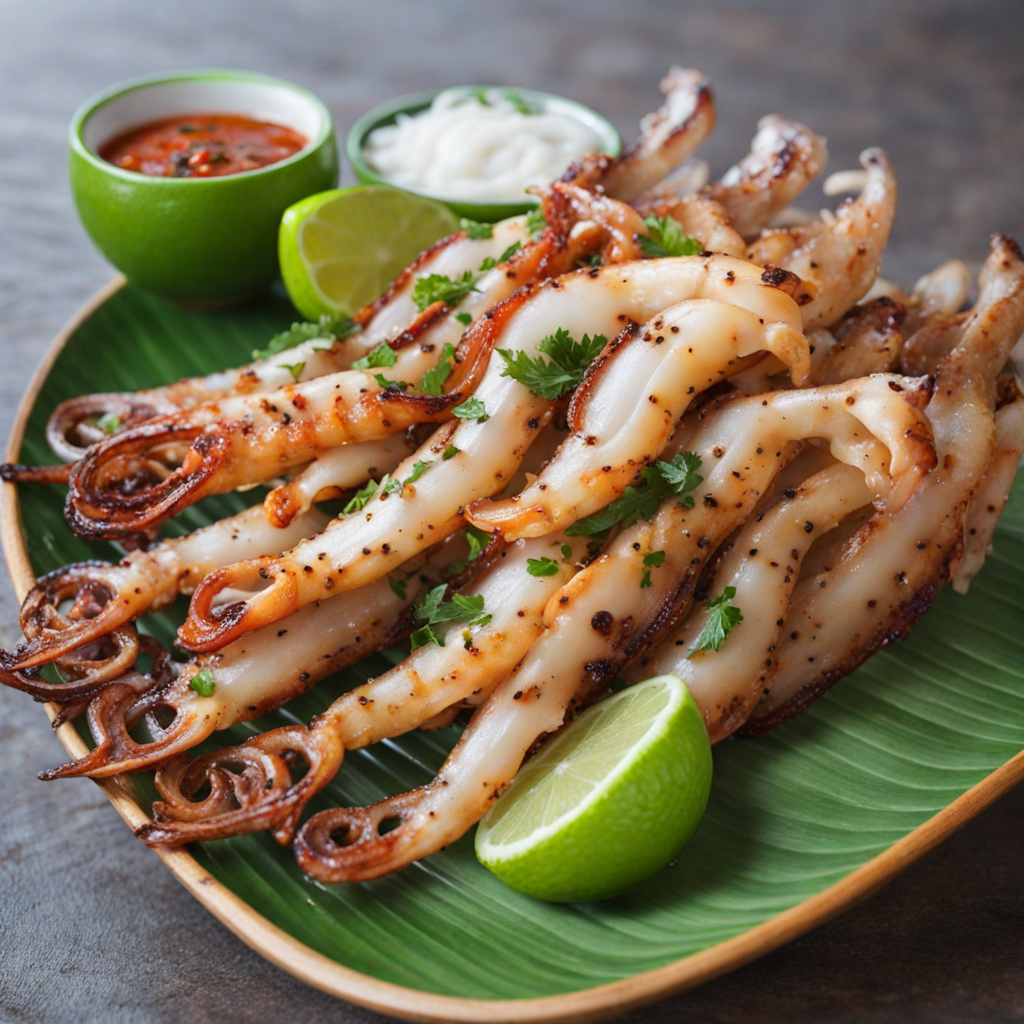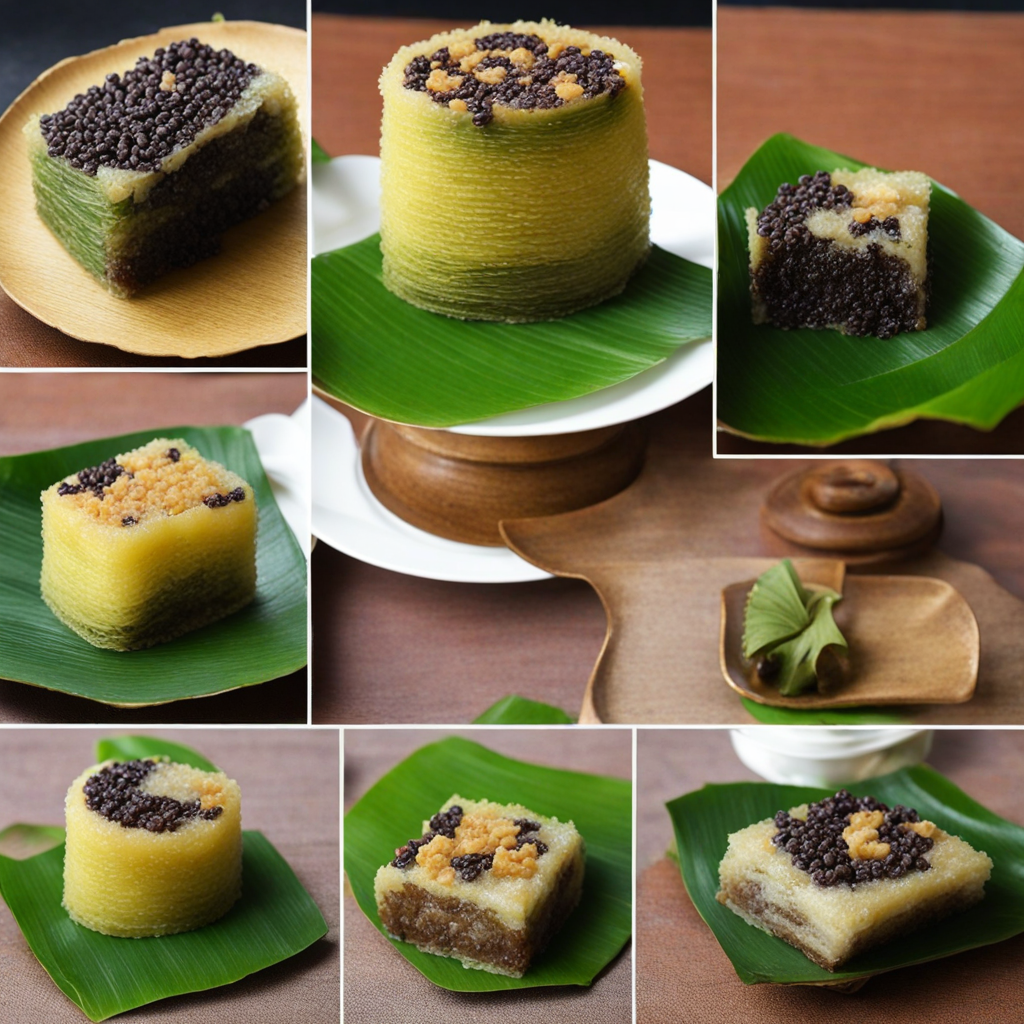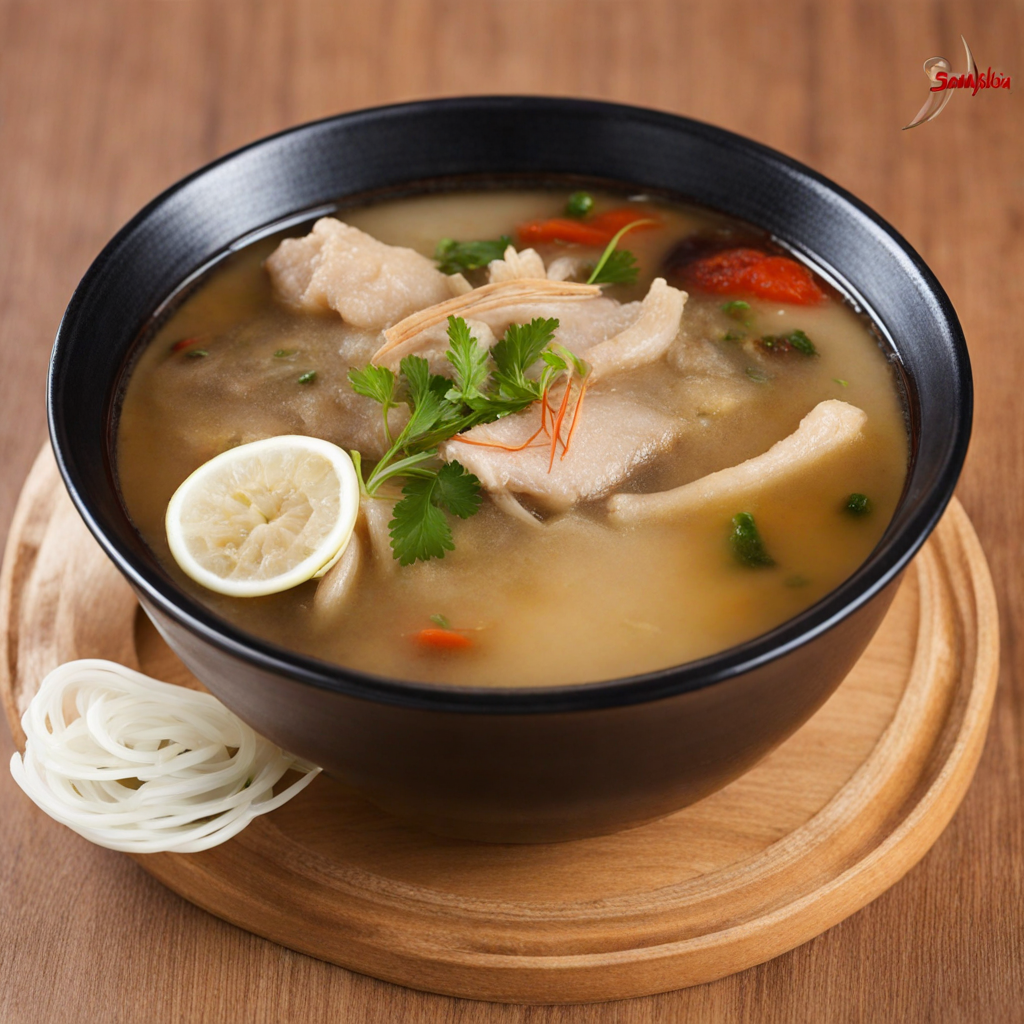Kralan
Kralan is a unique Cambodian delicacy that beautifully showcases the country's rich culinary heritage. This traditional snack consists of glutinous rice infused with coconut milk and often combined with various fillings such as mung beans or black beans. The rice is then carefully packed into bamboo tubes, which not only give Kralan its distinctive cylindrical shape but also impart a subtle smokiness during the grilling process. The combination of creamy coconut and slightly sweet rice creates a deliciously chewy texture that is both satisfying and comforting. As Kralan is grilled over an open flame, the bamboo tubes provide a natural barrier that allows the rice to cook evenly while absorbing the fragrant aroma of the burning wood. This method of cooking enhances the flavors, resulting in a slightly caramelized exterior that contrasts beautifully with the soft, warm interior. The dish can be enjoyed on its own or paired with a variety of dipping sauces to elevate the experience further. For those seeking to explore new and exciting flavors, Kralan offers a delightful adventure. The balance of sweet and savory notes, combined with the rustic presentation, makes it an ideal choice for food enthusiasts. Whether you’re enjoying it as a street food snack or as part of a larger meal, Kralan promises a taste of Cambodia that lingers long after the last bite.
How It Became This Dish
The History of ក្រឡាន (Kralan) in Cambodia #### Origin and Ingredients Kralan, a traditional Cambodian snack, is a delightful delicacy made from glutinous rice, coconut milk, and often filled with a variety of ingredients such as beans or corn. The name "kralan" translates to "bamboo rice," which aptly describes the method of cooking this dish. The origins of kralan can be traced back to the agrarian communities of Cambodia, where rice has been a staple food for centuries. The practice of cooking rice in bamboo tubes is believed to have been influenced by the region's lush environment, which provided abundant bamboo, a versatile and sustainable resource. Evidence suggests that the tradition of using bamboo as a cooking vessel may date back to ancient times, intertwined with the ways of life of the Khmer people. Not only is bamboo common in Cambodia, but it also symbolizes resilience and adaptability, qualities that resonate deeply with the Cambodian spirit. #### Cultural Significance Kralan holds a special place in Cambodian culture, often associated with festivals, celebrations, and communal gatherings. Traditionally enjoyed during the Pchum Ben festival, a time when Cambodians honor their ancestors, kralan serves as a reminder of the connection between the living and the dead. The dish embodies the spirit of sharing, as families come together to prepare and enjoy it, reinforcing bonds and fostering a sense of community. Moreover, kralan is often sold by street vendors and during local markets, making it an integral part of everyday life in Cambodia. It is not merely a snack; it is a symbol of hospitality and generosity. Offering kralan to guests is a way of showing respect and appreciation, reflecting the Cambodian values of kindness and community. #### The Preparation and Cooking Process The preparation of kralan is both an art and a science. To make this dish, glutinous rice is first soaked overnight to ensure it cooks evenly. The rice is then mixed with coconut milk, sugar, and salt, creating a rich and creamy texture. This mixture is often combined with various fillings, such as mung beans or corn, which add flavor and nutrition. The key to kralan's unique taste lies in the cooking method. The rice mixture is packed tightly into bamboo tubes, which are then sealed with banana leaves or natural fibers. This cooking technique allows the rice to absorb the flavors of the bamboo, resulting in a subtly smoky taste that enhances the dish's overall appeal. The tubes are then placed over an open flame, where they are rotated to ensure even cooking. The process of making kralan is often a communal affair, with families or friends gathering to prepare and cook the dish together. This not only enhances the flavor but also strengthens social ties, as everyone contributes to the process. #### Development Over Time Throughout the years, kralan has experienced various transformations while remaining true to its roots. As Cambodia has undergone significant changes, including periods of war, colonization, and modernization, the preparation and consumption of kralan have adapted accordingly. During the Khmer Rouge regime in the late 1970s, traditional foods like kralan faced decline. The oppressive environment disrupted agricultural practices and traditional lifestyles. However, as Cambodia began to recover in the 1980s and 1990s, there was a resurgence of interest in traditional foods. The revival of kralan can be seen as part of a broader movement to reclaim and preserve cultural heritage. In recent years, kralan has gained popularity not only among locals but also among tourists seeking authentic Cambodian experiences. Street vendors and rural communities continue to pass down the traditional methods of making kralan, while restaurants have begun to incorporate this dish into their menus, often giving it a contemporary twist. Some chefs experiment with new flavors and fillings, such as chocolate or fruit, appealing to a wider audience while maintaining respect for the traditional recipe. #### Kralan in Modern Cambodia In the modern context, kralan has become more than just a traditional snack; it has evolved into a culinary symbol of Cambodian identity. As the country embraces globalization, there is a growing interest in preserving and promoting traditional foods. Kralan represents an intersection of past and present, where heritage meets innovation. The rise of culinary tourism has also played a significant role in kralan's resurgence. Tourists are increasingly interested in immersive experiences that allow them to engage with local culture through food. Cooking classes that teach participants how to make kralan have become popular, bringing an appreciation for this traditional dish to a new generation of food lovers. Additionally, social media platforms have contributed to the global recognition of kralan. Photogenic presentations and innovative adaptations of the dish have attracted attention, showcasing the beauty and diversity of Cambodian cuisine. This visibility not only supports local vendors but also encourages the younger generation to take pride in their culinary heritage. #### Conclusion Kralan is more than just a delicious snack; it is a rich tapestry woven into the cultural fabric of Cambodia. Its origins reflect the agricultural lifestyle of the Khmer people, while its preparation and enjoyment underscore the values of community and hospitality. Despite the tumultuous history Cambodia has faced, kralan has endured and adapted, a testament to the resilience of its people and their commitment to preserving their culinary traditions. As Cambodia continues to evolve, kralan stands as a cherished symbol of heritage, a delicious reminder of the past, and a bridge to the future. Whether enjoyed during a festive celebration, sold by a street vendor, or made in a family kitchen, kralan remains a beloved dish that connects generations and tells the story of a nation rich in culture, history, and flavor.
You may like
Discover local flavors from Cambodia



